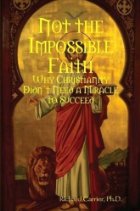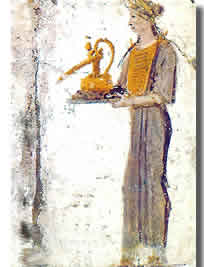 A little exchange of views (beginning here) on Larry Hurtado’s blog (Hurtado generously offers a platform for some interesting resources for those interested in mythicist arguments 😉 ) has alerted me to something no doubt many who follow Richard Carrier’s writings more attentively than I have done will already know that Carrier writes:
A little exchange of views (beginning here) on Larry Hurtado’s blog (Hurtado generously offers a platform for some interesting resources for those interested in mythicist arguments 😉 ) has alerted me to something no doubt many who follow Richard Carrier’s writings more attentively than I have done will already know that Carrier writes:
Nor was the idea of a preexistent spiritual son of God a novel idea among the Jews anyway. Paul’s contemporary, Philo, interprets the messianic prophecy of Zechariah 6:11-12 in just such a way. In the Septuagint this says to place the crown of kingship upon “Jesus,” for “So says Jehovah the Ruler of All, ‘Behold the man named ‘Rises’, and he shall rise up from his place below and he shall build the House of the Lord’.” This pretty much is the Christian Gospel. Philo was a Platonic thinker, so he could not imagine this as referring to “a man who is compounded of body and soul,” but thought it meant an “incorporeal being who in no respect differs from the divine image” whom “the Father of the Universe has caused to spring up as the eldest son.” Then Philo says, “In another passage, he calls this son the firstborn,” and says “he who is thus born” imitates “the ways of his father.” (Not the Impossible Faith, pp. 250-251)
Carrier then quotes the passage from Philo, and I quote it here from the Yonge translation available online. The word “East” has since been better understood as “Rises”, as in the rising of the sun:
“Behold, a man whose name is the East!” A very novel appellation indeed, if you consider it as spoken of a man who is compounded of body and soul; but if you look upon it as applied to that incorporeal being who in no respect differs from the divine image, you will then agree that the name of the east has been given to him with great felicity. (63) For the Father of the universe has caused him to spring up as the eldest son, whom, in another passage, he calls the firstborn; and he who is thus born, imitating the ways of his father . . . . (On the Confusion of Tongues, Book 14:62, 63)
Before adding my own discussion I’ll quote the next paragraph from Carrier, too: Continue reading “A Pre-Christian Heavenly Jesus”







